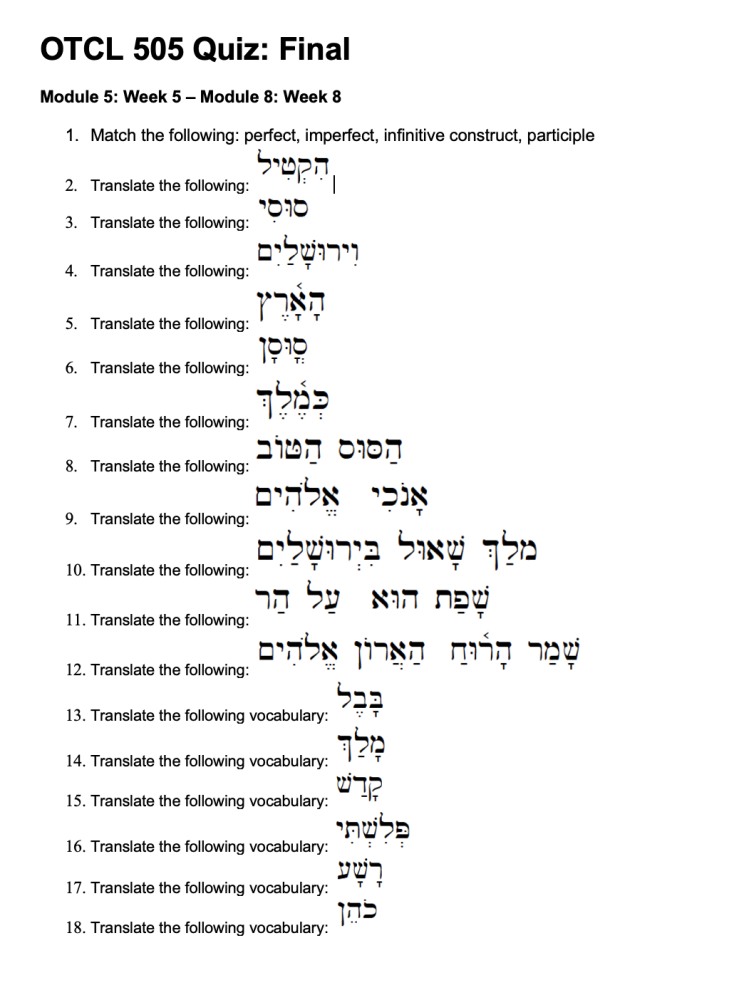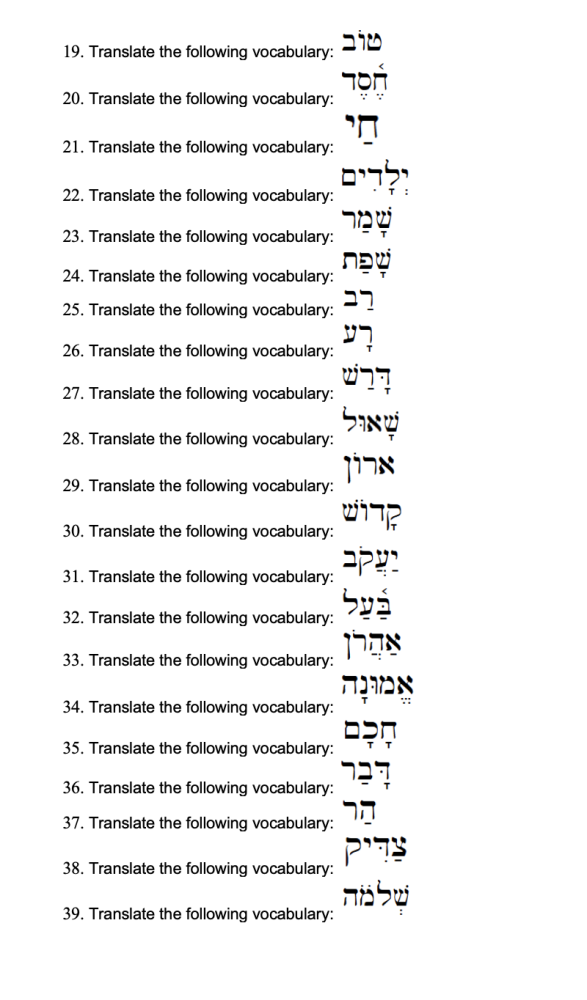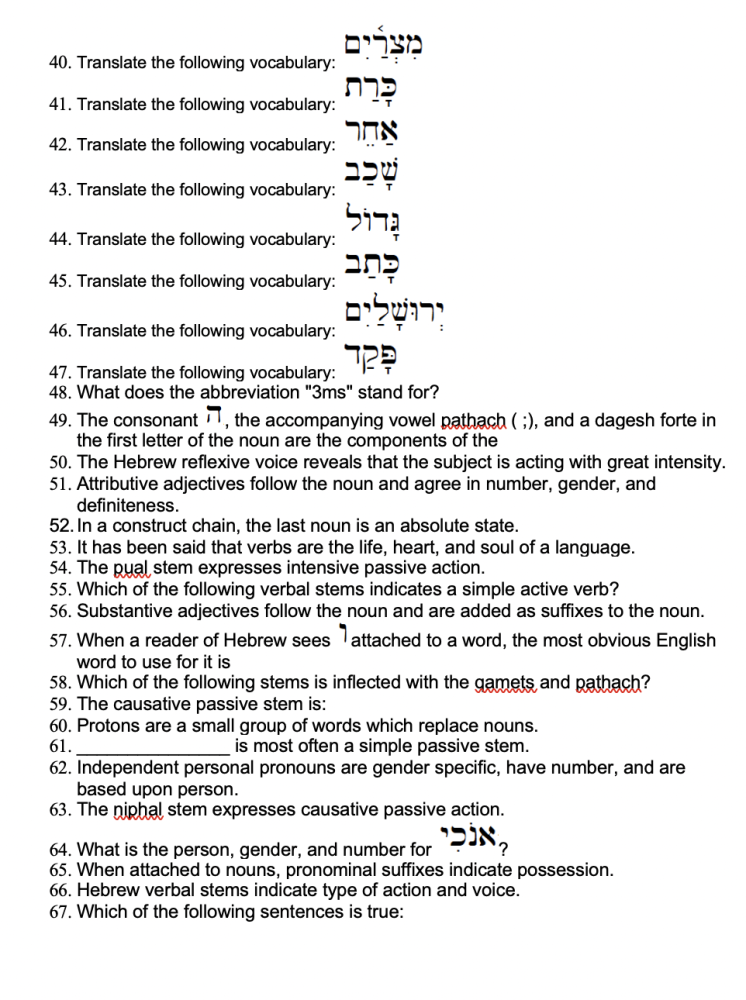OTCL 505 Quiz Final
OTCL 505 Quiz: Final
Module 5: Week 5 – Module 8: Week 8



- Match the following: perfect, imperfect, infinitive construct, participle
- Translate the following:
- Translate the following:
- Translate the following:
- Translate the following:
- Translate the following:
- Translate the following:
- Translate the following:
- Translate the following:
- Translate the following:
- Translate the following:
- Translate the following:
- Translate the following vocabulary:
- Translate the following vocabulary:
- Translate the following vocabulary:
- Translate the following vocabulary:
- Translate the following vocabulary:
- Translate the following vocabulary:
- Translate the following vocabulary:
- Translate the following vocabulary:
- Translate the following vocabulary:
- Translate the following vocabulary:
- Translate the following vocabulary:
- Translate the following vocabulary:
- Translate the following vocabulary:
- Translate the following vocabulary:
- Translate the following vocabulary:
- Translate the following vocabulary:
- Translate the following vocabulary:
- Translate the following vocabulary:
- Translate the following vocabulary:
- Translate the following vocabulary:
- Translate the following vocabulary:
- Translate the following vocabulary:
- Translate the following vocabulary:
- Translate the following vocabulary:
- Translate the following vocabulary:
- Translate the following vocabulary:
- Translate the following vocabulary:
- Translate the following vocabulary:
- Translate the following vocabulary:
- Translate the following vocabulary:
- Translate the following vocabulary:
- Translate the following vocabulary:
- Translate the following vocabulary:
- Translate the following vocabulary:
- Translate the following vocabulary:
- What does the abbreviation “3ms” stand for?
- The consonant , the accompanying vowel pathach ( ;), and a dagesh forte in the first letter of the noun are the components of the
- The Hebrew reflexive voice reveals that the subject is acting with great intensity.
- Attributive adjectives follow the noun and agree in number, gender, and definiteness.
- In a construct chain, the last noun is an absolute state.
- It has been said that verbs are the life, heart, and soul of a language.
- The pual stem expresses intensive passive action.
- Which of the following verbal stems indicates a simple active verb?
- Substantive adjectives follow the noun and are added as suffixes to the noun.
- When a reader of Hebrew sees attached to a word, the most obvious English word to use for it is
- Which of the following stems is inflected with the qamets and pathach?
- The causative passive stem is:
- Protons are a small group of words which replace nouns.
- _______________ is most often a simple passive stem.
- Independent personal pronouns are gender specific, have number, and are based upon person.
- The niphal stem expresses causative passive action.
- What is the person, gender, and number for ?
- When attached to nouns, pronominal suffixes indicate possession.
- Hebrew verbal stems indicate type of action and voice.
- Which of the following sentences is true: